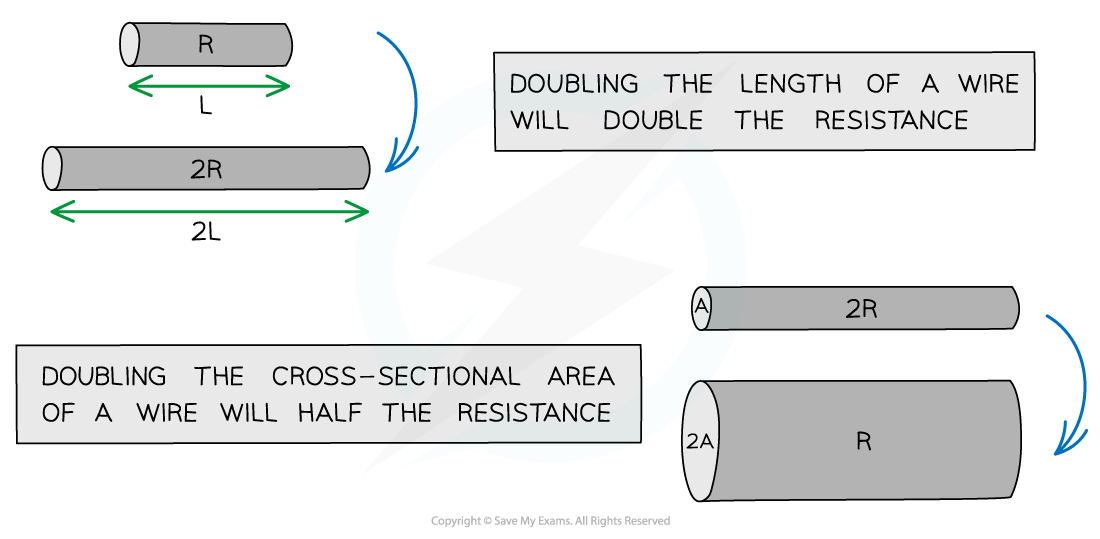Electrical Resistivity
- All materials have some resistance to the flow of charge
- As free electrons move through a metal wire, they collide with ions which get in their way
- As a result, they transfer some, or all, of their kinetic energy on collision, which causes electrical heating

Free electrons collide with ions which resist their flow
- Since current is the flow of charge, the ions resisting their flow cause resistance
- Resistance depends on the length of the wire, the cross-sectional area through which the current is passing and the resistivity of the material

Electrical resistance equation
- The resistivity equation shows that:
- The longer the wire, the greater its resistance
- The thicker the wire, the smaller its resistance

The length and width of the wire affect its resistance
- Resistivity is a property that describes the extent to which a material opposes the flow of electric current through it
- It is a property of the material, and is dependent on temperature
- Resistivity is measured in Ω m

Resistivity of some materials at room temperature
- The higher the resistivity of a material, the higher its resistance
- Copper has a relatively low resistivity at room temperature, and so is used for electrical wires
- This is because current flows through it very easily
- Insulators have such a high resistivity that virtually no current will flow through them
Worked example
Two electrically-conducting cylinders made from copper and aluminium respectively.
Their dimensions are shown below.

Copper resistivity = 1.7 × 10-8 Ω m
Aluminium resistivity = 2.6 × 10-8 Ω m
Which cylinder is the better conductor?

Exam Tip
You don’t need to memorise the value of the resistivity of any material; these will be given in the exam question.
Remember if the cross-sectional area is a circle e.g. in a wire, then area is proportional to the radius or diameter squared. This means if the diameter doubles, the area will quadruple. This causes the resistance to drop by a quarter. Considering how changing one property affects the value of the others is a common exam question.

